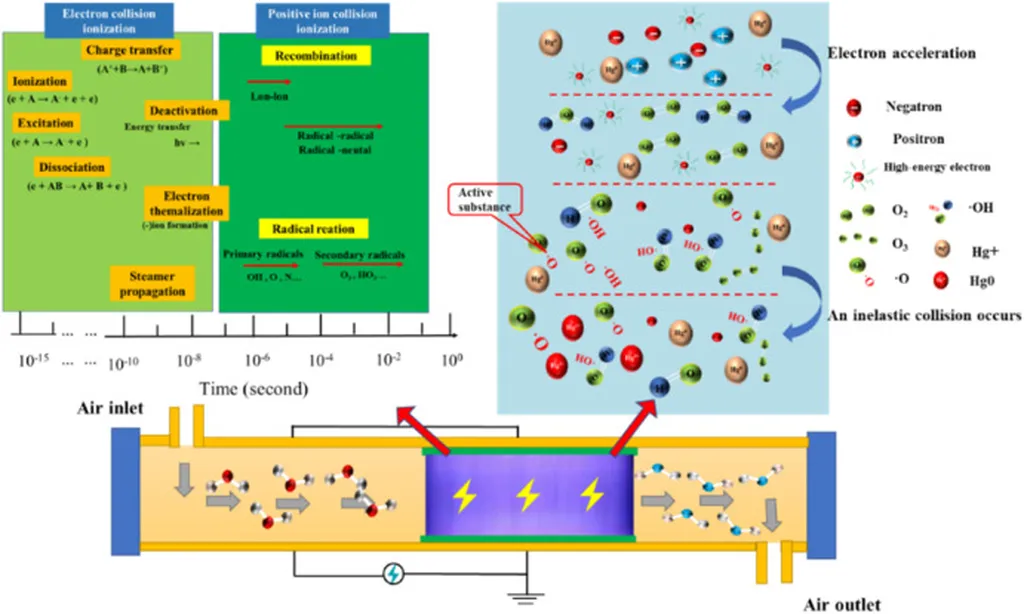In the relentless pursuit of cleaner energy, researchers are turning their attention to a persistent pollutant: mercury. A recent study published in *Energy and Environmental Protection* offers a comprehensive look at the latest advancements in adsorbents designed to capture mercury from flue gas, a critical step in reducing emissions from coal-fired power plants and other industrial sources. Led by Zhao Ma from the Hebei Key Lab of Power Plant Flue Gas Multi-Pollutants Control at North China Electric Power University, the research provides a detailed analysis of various adsorbents, their performance, and their potential to revolutionize mercury removal technologies.
Mercury, a heavy metal pollutant, poses significant risks to human health and ecosystems. Elemental mercury (Hg0) emissions from flue gas are particularly challenging to control, but adsorption has emerged as a promising solution. “Adsorption is a simple, practical, and effective method for capturing Hg0 from flue gas,” explains Ma. “Our study systematically classifies adsorbents based on their effective components and examines their characteristics, preparation methods, and performance.”
The research categorizes adsorbents into four main types: carbon-based and modified materials, metal oxides, metal sulfides, and other innovative materials. Each type has its own advantages and limitations. Carbon-based materials, for instance, boast a large specific surface area and functional groups that enhance their adsorption capabilities. However, they suffer from poor heat resistance and limited recyclability. Metal oxides, on the other hand, offer operational stability across a broad temperature range and large adsorption capacities, making them a robust option for industrial applications.
Metal sulfides, with their abundant unsaturated S-sites, provide high activity and a wide operational temperature range. Yet, their high-temperature regeneration requirements can degrade their activity, posing challenges for long-term use. “Each type of adsorbent has its strengths and weaknesses,” notes Ma. “Understanding these nuances is crucial for developing more effective and sustainable mercury removal technologies.”
The study also highlights the need for targeted improvements in adsorbent design. For instance, enhancing the thermal stability of carbon-based materials and optimizing the regeneration processes for metal sulfides could significantly boost their performance and longevity. These advancements could have profound implications for the energy sector, particularly for coal-fired power plants striving to meet stringent environmental regulations.
As the energy industry continues to grapple with the dual challenges of meeting energy demands and reducing pollution, innovations in mercury removal technologies are more critical than ever. This research not only sheds light on the current state of adsorbent technologies but also paves the way for future developments. By providing a comprehensive analysis of different adsorbents, the study offers valuable insights for researchers and industry professionals alike, guiding them toward more effective and sustainable solutions for mercury removal.
In the quest for cleaner energy, every breakthrough counts. This research is a significant step forward, offering a roadmap for the development of next-generation adsorbents that can capture mercury more efficiently and sustainably. As the energy sector continues to evolve, such innovations will be instrumental in shaping a cleaner, healthier future.

